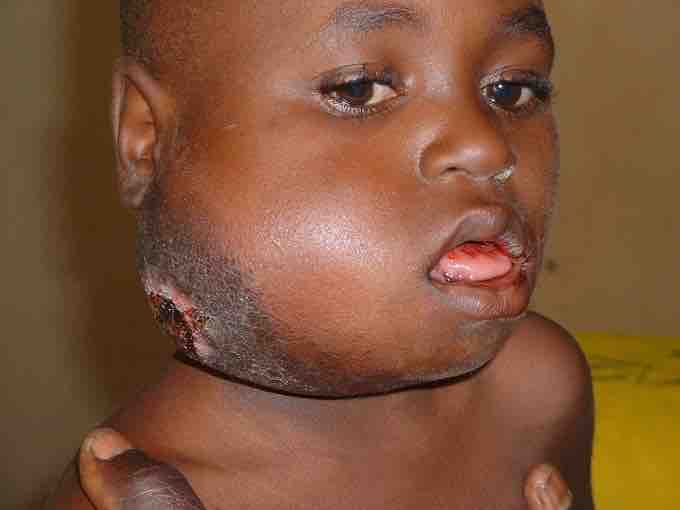Burkitt's lymphoma is a form of non-Hodgkin's lymphoma, a cancer of the lymphatic system (in particular, B lymphocytes). It is named after Denis Parsons Burkitt, a surgeon who first described the disease in 1956 while working in equatorial Africa. Burkitt's lymphoma usually develops in the abdomen and spreads to other organs, including the brain. Burkitt's lymphoma involves B-cells and is a rapidly growing cancer. Of all cancers involving the same class of blood cell, 2% of cases are Burkitt's lymphoma.
Classification
Currently Burkitt's lymphoma can be divided into three main clinical variants:
- Endemic: This variant occurs in equatorial Africa. It is the most common malignancy affecting children in this area. Children affected with the disease often also have chronic malaria, which is believed to have reduced resistance to Epstein-Barr virus (EBV), allowing it to take hold. The disease characteristically involves the jaw or other facial bone, distal ileum, cecum, ovaries, kidney or the breast .
- Sporadic: This variant type, also known as "non-African" is found outside of Africa. The tumor cells have a similar appearance to that of endemic Burkitt lymphoma. Again it is believed that impaired immunity provides an opening for development of the Epstein-Barr virus. The jaw is less commonly involved, compared to the endemic variant. The ileo-cecal region is the common site of involvement.
- Immunodeficiency-associated: Immunodeficiency-associated Burkitt lymphoma is usually associated with HIV infection or occurs in the setting of post-transplant patients who are taking immunosuppressive drugs. Burkitt lymphoma can be one of the diseases associated with the initial manifestation of AIDS.
By morphology (i.e. microscopic appearance) or immunophenotype, it is almost impossible to differentiate these three clinical variants. Immunodeficiency-associated Burkitt lymphoma may demonstrate more plasmacytic appearance or more pleomorphism, but these features are not specific.
Symptoms and Treatment
Burkitt lymphoma may first be noticed as a swelling of the lymph nodes (glands) in the neck, groin, or under the arm. These swollen lymph nodes are often painless, but can grow very rapidly. In the types commonly seen in the United States, the cancer usually starts in the belly area (abdomen). The disease can also start in the ovaries, testes, brain, and spinal fluid. Symptoms include fever, night sweats, unexplained swollen lymph nodes, and unexplained weight loss.
Chemotherapy is used to treat this type of cancer. Commonly used medicines include prednisone, cyclophosphamide, doxorubicin, ifosfamide, vincristine, cytarabine, methotrexate, rituximab, and etoposide. Other treatments are immunotherapy, bone marrow transplants, stem cell transplant, surgery to remove the tumor, and radiotherapy.

Burkitt's Lymphoma
Swelling of the jaw associated with Burkitt's Lymphoma